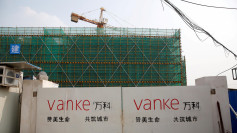Asian markets were on the back foot Wednesday as Wall Street suffered sharp losses. Market Watch reported that these can be attributed to the investors' worries that the 'trade war' between the US and China could reach new heights. This followed a weak stock market on Wednesday, where US stock futures accounted for another weak showing.
Investors got a heads-up on Tuesday that Trump will indeed push through with his tariffs, slapping it on about $200 billion of Chinese goods. The new percentage will be up 25% from 10% last Friday. That didn't dampen hopes for a breakthrough, however, as China's vice premier Liu He was arriving with a delegation intent on mapping out a resolution through trade talks in Washington.
The possibility for a deal to be worked out remained high, as Stephen Innes had said. The managing partner at SPI Asset Management said in a statement that a 'shift' in investor sentiments was about to happen. There are still those who are pessimistic, and further still, a few more were expected to remain neutral.
Stocks in China, meanwhile, felt the effects of the trade war as indexes in China and its territory in Hong Kong fell to its lowest. Stock indexes were affected after President Trump went ahead with his tariff plans. According to SCMP, that spilled over into Asian markets, where indexes from the other end of Asia up to its farthest in Sydney fell.
The Shanghai Composite was at 5.6 percent or at 171.88 points up to 2,906.46. The smaller Shenzhen exchange posted a 7.4 percent plunge from its small cap investors. The rout registered on a lot of mainland companies, where about 1,000 of them went down to the 10 percent daily limit set by exchanges.
The Hong Kong exchange fared fairly well, as it posted a 2.9 percent slump to 29,209.82. The Chinese Enterprise Index, meanwhile, posted a 3 percent slump as futures contracts on the FTSE China A50 sank to a 6.4 percent level. Asia felt the brunt of the slump as Australia's S&P/ASX 200 dropped 0.8 percent while Singapore's Straits Times fell by 3 percent.
The slump in Asia can be easily fixed by the US and China coming to some trade agreement that's agreeable to both of them. It's easier said than done, however; while China is mostly open to coming back to the trade table, the US is stubbornly trying to impose its will. No doubt the US' stubbornness will spell doom for the rest of Asia if it continues.





